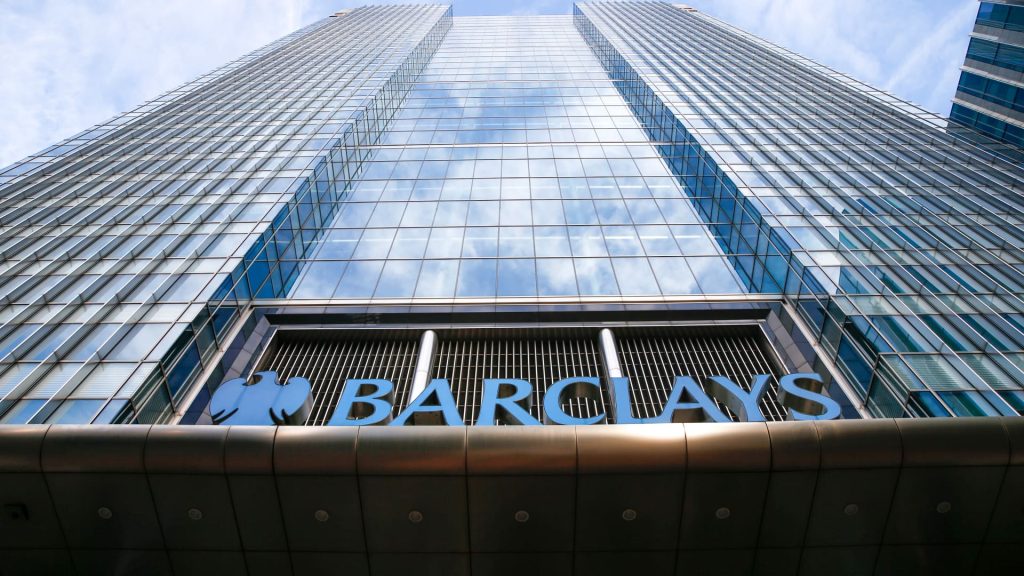One Churchill Place skyscraper, the Barclays Plc headquarters, at Canary Wharf in London, U.K., on Thursday, Jan. 7, 2021.
Bloomberg | Bloomberg | Getty Images
British bank Barclays on Tuesday beat profit expectations and announced a £1 billion ($1.33 billion) share buyback as market volatility boosted investment banking revenues.
Pre-tax profit beat estimates at £2.5 billion ($3.34 billion) in the second quarter, compared with a mean LSEG forecast of £2.23 billion. Group revenues met analyst projections of £7.2 billion.
Other highlights:
- Return on Tangible Equity hit 13.2% at the end of the first half, versus 14% in the first quarter.
- Earnings per share rose to 11.7p from 8.3p.
- CET1 capital ratio, a measure of bank solvency, was 14%, compared with 13.9% in the March quarter.
- Net interest income rose 16% year-on-year to £1.86 billion in the second quarter.
Investors have been watching the performance of the lender’s sharpened investment banking unit, which posted income of £3.3 billion in the three months to June, up 10% year-on-year.
It is the latest bank to report higher earnings boosted by markets trading in a quarter that included the turbulent fallout from U.S. President Donald Trump’s tariff policies announced in April. Global stocks plunged before staging a massive rebound, with Europe recovering ahead of the U.S. Currency markets have also been roiled, with the U.S. dollar suffering steep declines.
Deutsche Bank last week beat profit expectations, helped by strong performance in fixed income and currencies. Stateside, JPMorgan Chase and Morgan Stanley have been among those to report higher trading revenues.
The investment banking division is the traditional backbone of Barclays’ revenues and a target of cost reductions under CEO C.S. Venkatakrishnan unveiled in February 2024. It saw further changes in recent months, amid the hire of former Deutsche Numis exec Alex Ham as global chairman, a report of plans to cut more than 200 jobs and a report the bank is tapping consultancy McKinsey to identify further room for cost cutting.
Adding to challenges, pending changes in U.S. capital leverage rules could unleash further competition stateside — where Barclays has had a significant presence since acquiring Lehman Brothers’ investment banking and capital markets businesses — in the British lender’s area of strength of debt markets.
Domestically, Barclays faces a shifting British banking landscape, where Spanish titan Santander has doubled down on its U.K. presence with the early-July acquisition of British high street lender TSB from Sabadell, and investors are watching for any change in strategic tack from NatWest, which returned to private ownership at the end of May.
This breaking news story is being updated.

